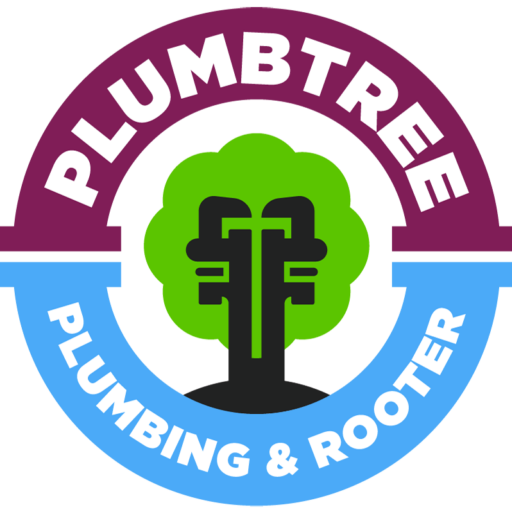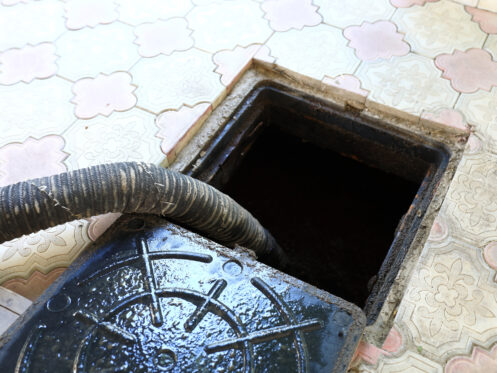Sewer line camera inspection is one of the most valuable diagnostic tools of the plumbing trade. These inspections delay specially designed instruments to evaluate sewer lines located in areas deep underground, behind walls, encased within concrete slabs, or even beneath a house’s foundation.
Before the advent of this camera technology, many attempts to locate a damaged sewer line required exploratory digging. This process often created excavation holes or trenches as plumbers performed their best-educated guesswork. The invasive method was also time-consuming and could cause unintentional damage to properties. By using a camera, professionals can now go deep to the source of blockage or damage with minimal disturbance to your property. But how does the technology work, and what are the other ways it benefits your home? A look at how sewer line cameras help resolve plumbing issues can help you make an informed choice for your family.
How Do Sewer Line Camera Inspections Work?
While a plumbing expert may customize a sewer line camera inspection to fit your household’s needs, the standard procedure for this process includes basic steps. To start the inspection, a plumber or specialist inserts a rod with a high-resolution camera into your sewer line. This camera or optical instrument is waterproof and can typically capture high-tech video or images. The rod or cable is highly flexible, allowing the device to maneuver through the twists and turns of your sewer network to thoroughly examine pipes and pipe walls. According to the American Society of Plumbing Engineers (ASPE), sewer line cameras can normally accommodate pipes ranging from 2.0 to 36.0 in diameter.
During the inspection, the high-definition camera also transmits a video signal or images to the plumber’s HDTV monitor. This allows the plumber to view the conditions of your sewer line in real time. Trained plumbers use this tool to recognize the source of any clogs, backups, or blockages and devise a plan of action accordingly. Finally, most sewer line cameras also come equipped with a waterproof LED light for visibility. This illuminates any dark or opaque piping that may be located deep underground. From the above-ground location, plumbers can use the camera’s LED light and radio transmitter to find the exact site of problems within your sewer system.
Plumbers tend to use cameras to make practical assessments before using cleaning or repair tools like cable snakes or hydro-jetting. Getting an accurate measurement of the depth and location of a problem helps improve accuracy and cost-effectiveness. Because of the safety risks associated with sewer lines, it is much more efficient for plumbers to have a complete picture of the problem prior to starting any intrusive fixes. The sewer line camera can also help plumbers compare before and after pictures or footage to ensure a job well done.
What Problems Can Sewer Line Camera Inspections Detect?
Sewer line camera inspections are popular because they can locate a diverse set of problems in hard-to-reach places. These problems range from deterioration to obstruction. Common problems detected include tree root intrusions, major blockages, or collapsed pipes.
Tree Root Intrusions
Tree roots can cause significant damage to your underground sewer network. As trees grow, their roots seek out water sources. Any moisture or condensation from your pipes can attract roots. If there is a preexisting crack within your pipes, tree roots may infiltrate your pipes to get to the water inside. This can cause major rupturing. While various piping materials are vulnerable to tree root intrusion, it is very common in older pipe systems made of clay, cast iron, or other porous materials.
Major Blockages
Sewer line camera inspections can identify major blockages that occur due to the buildup of grease, debris, paper, or other materials. For example, years of pouring harmful materials like fat, oils, and grease down your sewer line can create a hard obstruction known as FOG. This obstruction can create a mainline backup that you can’t fix with plunging, liquid drain cleaners, or drain augers. A plumber can use a camera to find the blockage and professionally fix it.
Collapsed Sewer Lines
Since the inspection camera travels along the sewer line itself, this device can detect structural problems within your sewer system. For example, the plumber will be able to see whether the line has collapsed, sagged, or shifted. Sewer systems that have become misaligned or bellied prevent the proper disposal of waste and can cause repeat blockages. The plumber will also be able to see if the collapse has resulted from problems like punctures, corrosion, or previously unidentified cracks and leaks. Unfixed sewer leaks can eventually create health hazards like bacteria exposure or mold, so the camera inspection will help a professional locate the problematic section and conduct timely repairs.
What Are Some Signs That I Need a Sewer Line Camera Inspection?
Sewer line camera inspections are advantageous in many scenarios. Common reasons to schedule an inspection include backups, unusual odors, low water pressure, or major household changes such as selling the home.
Repeated Backups or Clogs
Water that backs up into your sinks, bathtubs, or toilets is often a sign of sewer line obstructions or clogs. Backups that contain wastewater are health hazards, so it is important to schedule an inspection as quickly as possible. Similarly, water that drains slowly from sinks, showers, or toilets can also indicate a clog somewhere down the line. Gurgling or hissing noises often accompany backed-up water and slowly draining pipes. The combination of backups and slow drainage can continue to create plumbing problems until a professional locates the main blockage and removes it from your system.
Unusual Odors
Foul odors coming from your drains, basement, or yard could indicate a broken or cracked sewer line. Any rupture or damage to the line can result in sewage leaks. For example, the presence of foul odor combined with wet patches in your yard is often a sure sign of sewage leakage. This is a major safety hazard and can also create extensive damage to your property. Moreover, excessive leakage in areas like your basement or near your drains can also result in mold growth. Not only can mold produce an unpleasant odor, but mold spores can also exacerbate respiratory problems and other illnesses. If you constantly see mold near your piping, a plumber can perform a camera inspection to get to the source of the issue.
Pest Infestations
Unfortunately, sewage problems can attract pests like drain flies or sewer gnats. These pests can cause health problems by spreading germs and bacteria associated with sewage. They can also create budget problems by requiring you to contact an expensive exterminator for complete removal. If you see persistent gnats or flies, it is time to contact a plumber to spare yourself from more problems in the long run.
Low Water Pressure
Low water pressure in your home is often a symptom of a water line problem. However, low water pressure may also signify a defective sewer line. If you notice poor water pressure within your showers or inadequate performance of your laundry machine, these water problems can ultimately derive from a leaky sewer pipe.
Inspection Before Buying or Selling Home
Realtors recommend that homeowners show proof of a plumbing inspection before selling a home. Similarly, prospective homeowners can also request a sewer scope inspection as part of the final evaluation before closing. This can help ensure that the sewage system is free of unseen problems that could result in costly future repairs.
Contact Us Today
Obtaining a sewer line camera inspection is a reliable way to identify and resolve plumbing problems within the home. Plumbtree Plumbing & Rooter offers inspections for homes in San Jose, Silicon Valley, and the surrounding areas. We offer evaluation and sewer repair for any part of your sewage system. Our technicians also conduct leak detection, hydro-jetting, and valve installation or repair. Contact Plumbtree Plumbing & Rooter today for all your plumbing needs.

